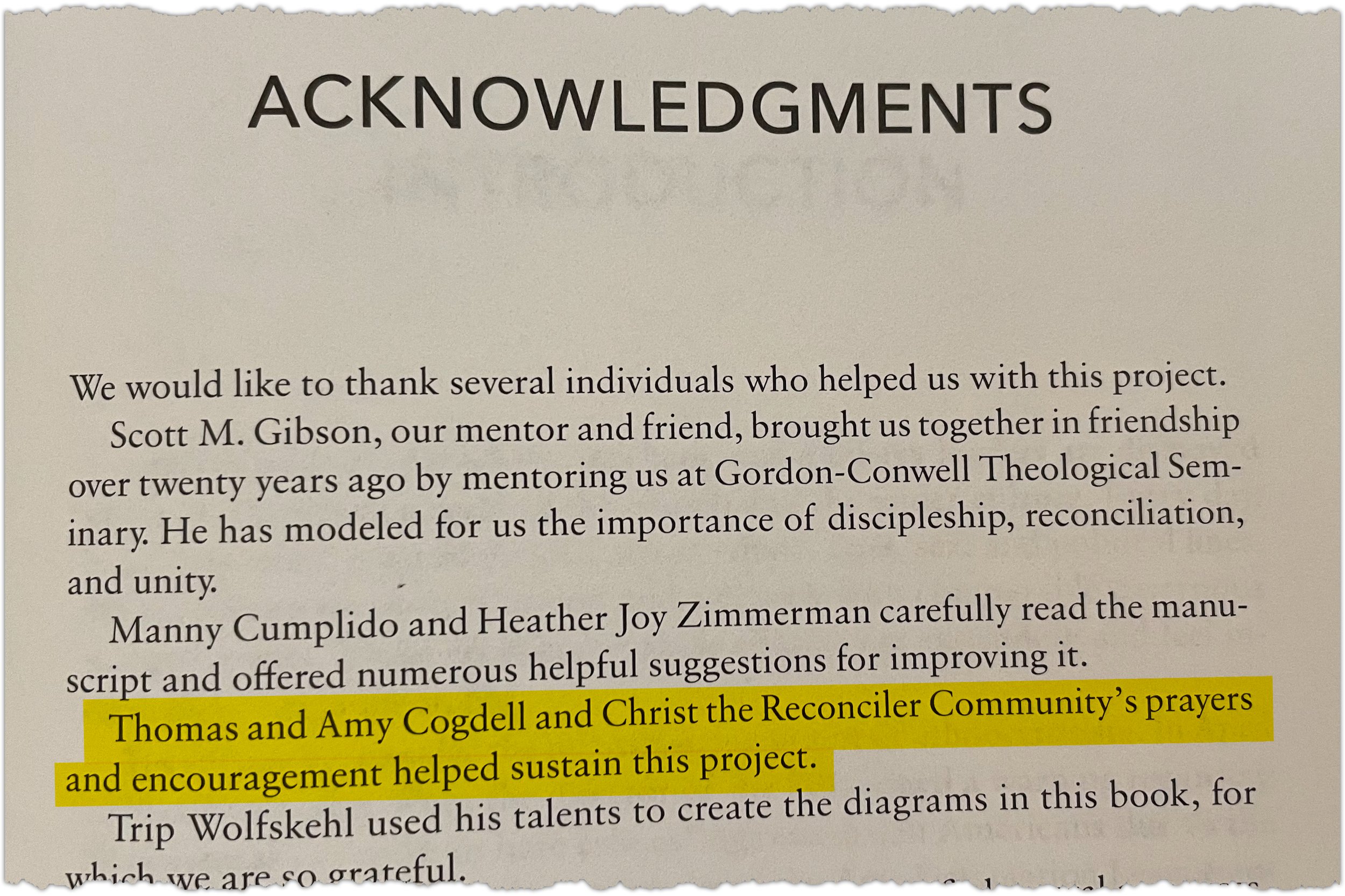Bottom line: If you are a pastor, I highly recommend that you purchase this book, read it, and let the Holy Spirit guide you as to how to put it into practice. If you are a layperson, buy the book and give it to your pastor or priest!
Paul visits Austin on May 7, 2021
Last year we were privileged to have a visit from Paul Hoffman of Rhode Island. Paul is the pastor of a church in Newport, and has worked extensively there - and elsewhere - for racial reconciliation. As we drove together through Austin, I was amazed at Paul’s capacity to absorb the ethos and stories of God’s work in our city.
We met that night as a community to hear from and pray for Paul. It was our first such meeting after the long COVID pause, and it was a true joy to be back together. When Paul shared that he was co-authoring (with Matthew D. Kim) a book presenting a model for pastors to preach about unity and reconciliation, there was a strong burden to pray for this book - that it would have a great impact in the United States once published.
And now, over a year later - here it is!
Preaching to a Divided Nation is an important book, and very timely. Paul & Matthew present a seven-step model for preachers to adopt, to enable them to confidently address the divisive issues of our time:
Theological
Contextual
Personal
Positional
Methodological
Practical
Categorical
The title of the book clearly focuses the content on the United States. The four “isms” that they present as dividing us are all highly relevant to life in American today:
Ethnocentrism
Classism
Sexism
Partisan Polarity (which they admit doesn’t really end in “ism”!)
As such, the book only touches the need for denominational reconciliation in a tangential way - all of the seven steps presented can easily be applied to reconciliation within the divided body of Christ, but the reader must do the work of extending them into that arena. This is in no way a criticism of the book, just a heads-up for those of us who are more focused on that aspect of reconciliation. For example, the following passage in the Introduction is as true for Catholic-Protestant division, as it is for right-left politics:
The bottom line: the church’s divisions are real and destructive. They break God’s heart, undermine our gospel witness, and contradict the reality of heaven. It appears the bride of Christ is struggling to overcome the diseases of prejudice and polarization. Many Christians are behaving boorishly, failing to exhibit a trace of patience, understanding, compassion, or empathy. Sadly, all too often the nonreligious seem more gracious than those who claim to know Christ.
In addition to the body of the book, Matthew and Paul have put together very helpful content that is included in the Appendices, including:
Thoughts on Critical Race Theory (CRT)
Sample Homiletical Integrity Covenant
Sample Sermons on Classism, Ethnocentrism, Political Division, Reconciliation, Sexism, and Unity!
If you are a pastor, I highly recommend that you purchase this book, read it, and let the Holy Spirit guide you as to how to put it into practice. If you are a layperson, buy the book and give it to your pastor or priest!
One really special aspect of this book for our community is the way we can see that Paul’s visit here in May 2021 impacted him and the development of the book:
In addition, Matthew and Paul conclude the entire book with the Seabrook story from Austin! What an honor it is to have this story included in such an important book. Thank you, Paul!



